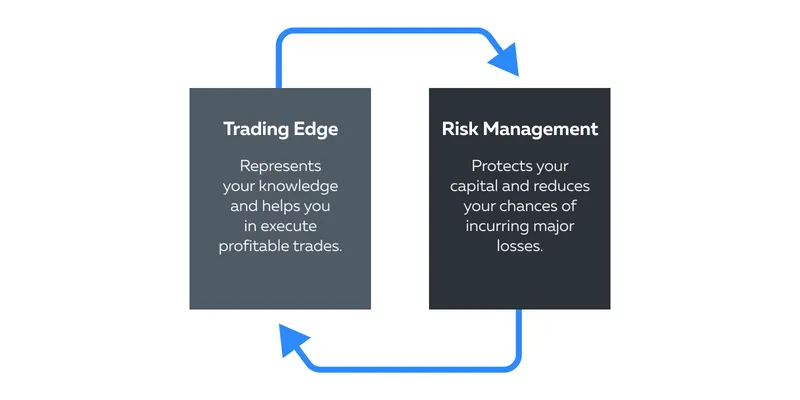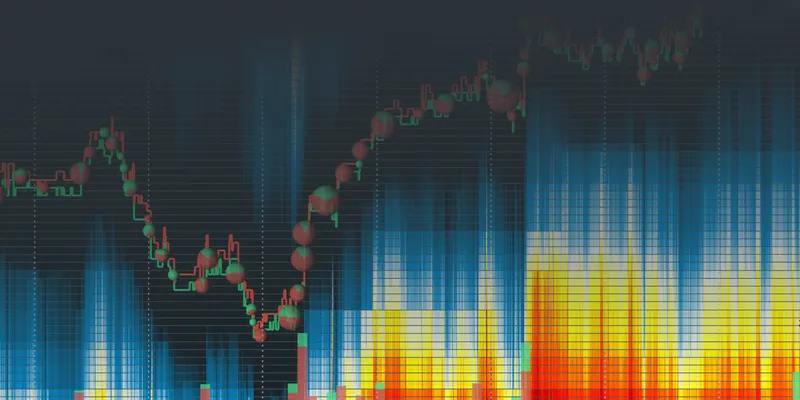

December Trading
Deals Are Live!
Save on Global+, data access,
and add-ons.
See All December Deals

Black Friday
Nov 28-Dec 31
Ended
50% OFF Global+ Quarterly
+ 50% OFF Data (3 months)

Cyber Monday
Dec 1 - Dec 31
Ended
60% OFF Global+ Monthly
+ Data (1 month)

Add-on Deals
Dec 1 - Dec 31
Ended
50% OFF
Add-ons

New Year Sale
Dec 26 - Jan 1
0 days : 20 hours
30% OFF Global+ Lifetime
*Data not included
Education
December 25, 2024
SHARE
How to Discover and Improve Your Trading Edge
What sets successful traders apart from the rest of the crowd? It’s their
trading edge, a concept that delves deeper than surface-level strategies or
tools. This edge is rooted in a profound understanding of the market,
rigorous testing, and the adaptability to thrive in ever-changing
conditions. Successful traders consistently apply their edge with confidence
to gain a competitive advantage.
This article unveils the core principles behind this concept, shedding light
on what distinguishes successful traders from the rest of the pack. We’ll
understand the power of risk management and introduce you to groundbreaking
market analysis tools. Let’s get started.
Discovering and Strengthening Your Trading Edge
A trading edge is much more than just using a particular tool or pattern. It
represents a deep understanding of the market which traders consistently
apply to generate positive returns. Let’s delve deeper into this concept.
The Essence of a Trading Edge
You cannot acquire a trading edge overnight or by simply using a specific
trading strategy. It’s the result of a comprehensive and nuanced
understanding of the markets, as well as the ability to consistently exploit
that understanding to your advantage. Let’s understand its essence through
these points:
-
Historical Testing:
-
A trading edge is often built on a foundation of rigorous
historical testing. -
This involves studying past market data to understand how a
particular strategy or approach would have performed in various
market conditions. -
It helps traders identify patterns and tendencies that can be
exploited for profit.
-
-
Adaptation to Market Changes:
-
The markets are not static; they constantly evolve.
-
A genuine trading edge involves the ability to adapt your
strategies and approaches to changing market conditions. -
What worked yesterday may not work today, and a trader with an
edge is someone who can recognize these changes and adjust their
trading accordingly.
-
-
Nuanced Understanding:
-
Many traders may use the same technical patterns or indicators.
-
But having a trading edge means not just recognizing patterns
but understanding the underlying:-
Market dynamics,
-
Psychology, and
-
Nuances.
-
-
Believing in and Knowing Your Edge
Belief in your trading edge gives you the confidence to execute your trading
plan with conviction. When you have thoroughly tested and validated your
strategy, you are more likely to stick with it even during periods of
drawdown or uncertainty. This confidence can be the difference between
success and failure in the markets.
In addition to historical testing, real-world experience is invaluable. A
trader who has executed hundreds of trades based on a particular strategy
gains practical insights into its strengths and weaknesses. Let’s understand
with a hypothetical example.
Consider a trader employing a simple moving average crossover strategy. This
strategy generates buy and sell signals using two moving averages: one with
a shorter time period and another with a longer period. While this strategy
is widely recognized, the trader’s success hinges on:
-
Deep understanding and belief in the strategy
-
Meticulous testing with historical data
-
Observing its effectiveness over numerous actual trades
-
Knowing when it performs well and its limitations under various
market conditions.
-
This knowledge equips them with the confidence to consistently apply
the strategy.
Consistency: The Bedrock of Your Edge
Consistency is the bedrock of your trading edge, and maintaining it is
crucial for long-term success in the financial markets. Inconsistent
application of your edge can dilute its effectiveness and undermine your
profitability. See the table below to explore why consistency is so vital.
|
What are the benefits of consistency? |
What do they mean? |
How do they practically help traders? |
|
Sticking to the Plan |
A well-developed trading edge is based on a specific set |
Consistency helps traders not to deviate from the set |
|
Emotional Control |
Consistency helps control emotions and increases the
|
Following a well-defined trading plan consistently, |
|
Long-term Viability |
Many trading edges are designed to work over a series of |
Traders can restrict themselves from changing parameters |
Let’s understand better with a hypothetical example.
The Scenario
-
A trader has developed a trading edge based on a trend-following
strategy. -
This strategy involves:
-
Buying when a stock’s price crosses above a certain moving
average and -
Selling when it crosses below another moving average.
-
-
The trader has tested this strategy thoroughly and has seen positive
returns over a significant number of trades.
The Dynamic Market
-
After a series of losses or a brief period of underperformance, the
trader becomes impatient and impulsive. -
They start second-guessing their strategy and decide to change the
parameters, such as:-
Using shorter moving averages or
-
Adjusting the entry and exit criteria.
-
-
They do this in an attempt to quickly recover from their losses.
The Lack of Consistency
-
What traders do not realize is that market conditions often go
through cycles. -
Periods of drawdown are not uncommon, even for successful
strategies. -
By changing their parameters impulsively, the trader:
-
Abandons their well-tested edge and
-
Introduces inconsistency in their trading approach.
-
The Outcome
-
Traders may miss out on the potential profits that the original
strategy could have provided over the long term. -
By acting emotionally and inconsistently, they dilute the
effectiveness of their edge and jeopardize its viability.
The Synergy of Edge and Risk Management
While having a trading edge is crucial, it remains incomplete without
effective
risk management
. The true distinction between successful traders and those who encounter
significant losses lies in the synergy between these two elements. A strong
trading strategy must be accompanied by robust risk management practices
that protect your capital and enable your trading edge to flourish in the
long term.
Edge and Risk: Two Sides of the Same Coin

Trading edge and risk management are intricately linked. It’s the
combination of both that distinguishes successful traders from the rest..
Explore their significance in the table below:
|
Trading Edge |
Risk Management |
|
|
Let’s understand this relationship with an example.
-
A trader has developed a trading edge with a 60% success rate.
-
This means that, over a series of trades, they can expect to win 60%
of the time. -
While this edge is statistically favorable, it does not guarantee
success in every single trade.
Without proper risk management, a couple of losing trades can still have a
significant negative impact on the trader’s account. This is where risk
management comes into play.
A trader with sound risk management practices will:
-
Limit the amount of capital risked on each trade, often to a small
percentage of their total account balance. -
Use stop-loss orders to limit potential losses on individual trades.
-
Diversify their trades to spread risk across different assets or
markets.
By combining their trading edge with effective risk management, the trader
increases their chances of long-term success and ensures that they protect
their capital and maintain the ability to capitalize on their edge over
time.
Adjusting Your Edge in Changing Markets
Market conditions are not static, and what works well in one environment may
be less effective in another. Read this example:
-
A trader develops a trading edge based on a specific stock pattern.
-
This pattern has consistently provided profitable opportunities
during stable economic conditions. -
However, during economic downturns or periods of high volatility,
this pattern became less reliable.
In such times, it’s prudent for the trader to reassess their approach. They
might decide to reduce their trading frequency or trade size to mitigate the
increased risk associated with unfavorable market conditions. Alternatively,
they may shift their focus to:
-
Different asset classes or
-
Strategies that are better suited to the current environment
Edge, Flexibility, and Evolution
The ability to adapt and evolve your trading edge is a critical factor for
long-term success. With the advent of
high-frequency trading
, the:
-
Market dynamics shifted, and
-
Opportunities emerged and disappeared at lightning speed.
Traders who adapted their strategies to this new environment thrived, while
those who clung to their old methods often found diminishing returns.
Adaptive traders modified their approaches, incorporating algorithms,
automation, and cutting-edge technology to compete in this fast-paced arena.
By doing so, they were able to capitalize on the changing market conditions.
How to Use Bookmap to Enhance Your Edge

Most traders use Bookmap’s visualization capabilities to see real-time
heatmaps of market liquidity and highlight volume within patterns, such as
the engulfing pattern. This enhanced insight equips traders with a more
potent edge and empowers them to make well-informed trading decisions. Let’s
understand this visualization feature.
Visualizing the Unseen with Bookmap
Bookmap enhances the visualization capabilities of traders with:
-
Real-time heatmaps of market liquidity and
-
The ability to highlight volume within patterns like the engulfing
pattern.
See this table below for a better understanding:
|
Real-time Heatmaps |
Volume within Patterns |
|
|
Liquidity Insights for Improved Risk Management
Bookmap primarily serves as a tool for enhancing a trader’s edge by
visualizing order flow. However, it also provides valuable features for risk
management. Here’s how this works:
-
Identifying Areas of Liquidity:
-
Bookmap allows traders to see where there are significant
clusters of buy and sell orders in the order book. -
These areas of liquidity represent levels where a substantial
number of market participants are willing to buy or sell.
-
-
Risk Management with Liquidity Zones:
-
Traders use the information about liquidity to set their
stop-loss orders more effectively. -
Placing stop-loss orders just beyond zones of liquidity helps
in:-
Reducing the risk of getting stopped out by minor price
fluctuations or -
Restricting “stop-hunting” actions by market participants.
-
-
Conclusion
The journey of a trader is built upon two essential pillars: a well-defined,
believed-in, and consistently applied trading edge and effective risk
management. While risk management ensures longevity and safeguards your
capital, the trading edge represents your confidence and understanding of
the market.
Using advanced market analysis tools like Bookmap aids traders in
visualizing the order book and comprehending the flow of liquidity. These
capabilities provide traders with impactful insights to refine and
strengthen their trading edge. Ready to Elevate Your Risk Management Skills?
Dive deep into our comprehensive guide that provides a crash course on risk
management in trading. Equip yourself with the knowledge to protect your
capital and optimize your trading strategies.
Explore now
.
